4 Must-Know Redfish Tips (Plus FREE PDF Cheat Sheet)
- By: Joseph Simonds
- on
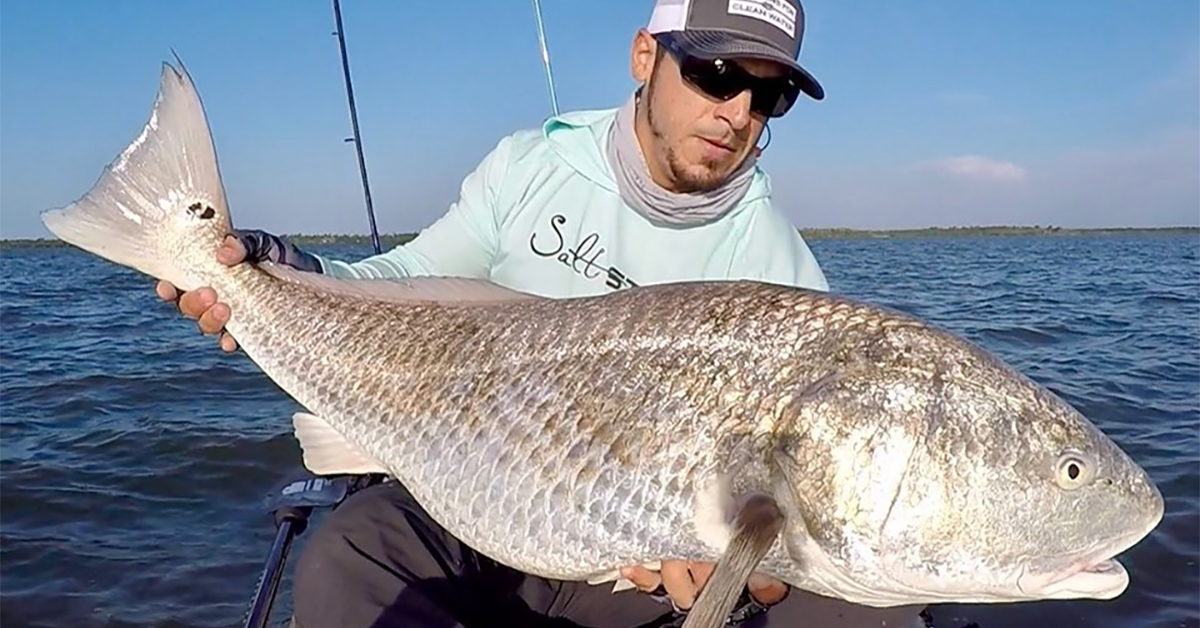
Are you catching more redfish than you can handle?
If not, you’re in the right place!
In this article, we’re going to cover the four things you have to know if you want to catch more redfish, plus there will be tons of videos to demonstrate specific points and provide some entertaining redfish catching footage.
Now here’s the thing to keep in mind: a redfish is a redfish, no matter if it’s a Texas redfish, Florida redfish, or Virginia redfish.
There are slight differences of course (which we’ll get into later), but for the most part, these strategies we’ll talk about today are good for wherever redfish can be found.
Here are the four things you need to know if you want to catch more redfish:
- Where to find redfish
- What equipment you need to catch redfish
- How to catch redfish with live bait
- How to catch redfish with artificial lures
Ready to get started?
Let’s dive in!
Note: to download the Free PDF Cheat Sheet, click here.
The Best Spots To Catch Redfish
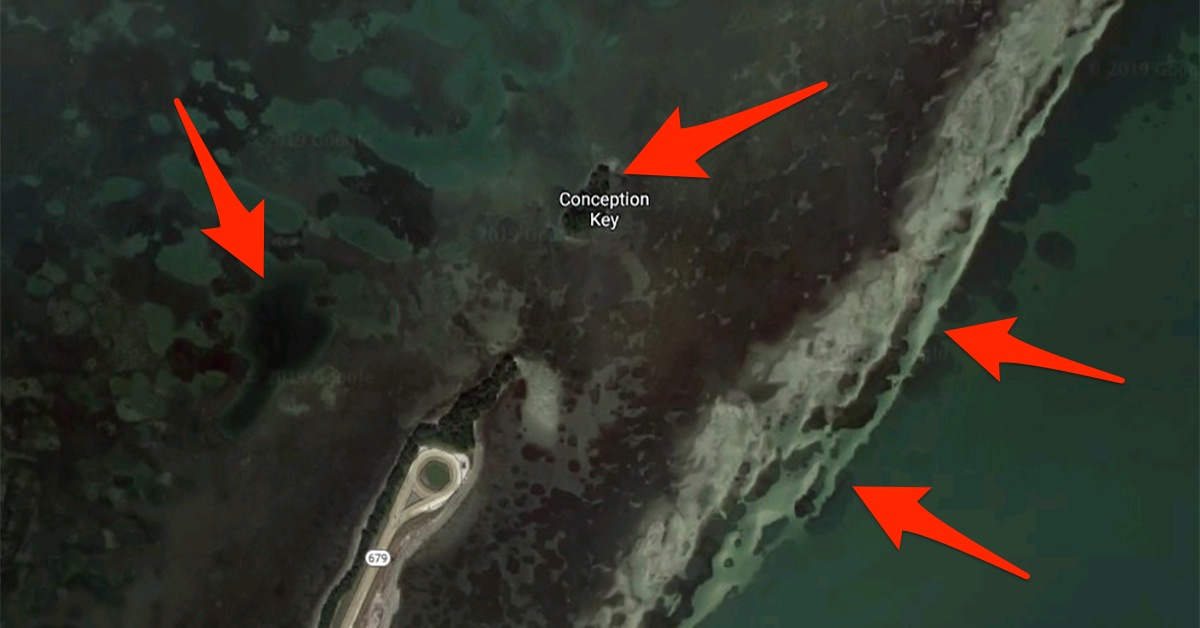
It doesn’t matter if you have a $50,000 boat, a fancy new rod and reel, and the latest and greatest lures…
If you can’t find feeding redfish, you aren’t going to catch any.
Here are three things you want to look for when it comes to finding redfish:
- Structure (which helps them find food and hide from predators)
- Food
- Current
Some of our favorite structures to catch redfish on include:
- Docks
- Grass flats
- Mangrove shorelines
- Points
- Edges of flats and channels
- Sandy potholes
- Jetties
- Bridges
- Passes/Inlets
The more structure elements at a spot, the merrier.
For instance, if you’re fishing a dock by some seagrass and a mangrove shoreline with the edge of a channel nearby, that’s four structure elements, which would have a much better chance of holding redfish than say, a grass flat with no potholes or depth changes.
Another thing to keep in mind when you find structure is to look for signs of fish.
Here’s what you want to look for:
- Birds
- Bait
- Boils (mud plumes that mean you just spooked a fish away)
As far as tides go, we don’t have a favorite tide, we just prefer that water is moving.
For tips on how to find the best fishing spots using online maps, check out this video:
How To Find The Best Fishing Spots Online [VIDEO]
Now the other component when it comes to finding redfish is to keep in mind that they move.
This is why spots maps don’t work.
Fish are always on the move depending on the tide, current, time of year, weather, and many other factors (which is why we created our online fishing club).
Want To Solve Your #1 Redfish Catching Problem Right Now?
After surveying over 7,000 inshore anglers about their top problems in consistently catching redfish, we found that it all boils down to a half-dozen core mistakes (aka – “Redfish Skunk Factors”).
So we made this custom analysis tool to help you solve your #1 problem: Click here to get started
Here are some general tips on where to find fish during each season:
Winter
When the water is coldest, redfish need to find a way to warm up.
They do this by looking for warmer water, which is typically in the backwater creeks, near docks, deeper channels, and in areas with muddy bottom.
During the morning they’ll be in deeper channels because deeper water is less affected by nightly temperature drops, but during the afternoon they’ll be in shallow water that the afternoon sun has warmed up.
For more tips on catching redfish in the winter, check out this video:
How To Catch Redfish In The Winter [VIDEO]
Spring
Springtime is a transition period for reds as they leave the backwater creeks and head towards their summer homes.
Water temperatures are comfortable for them, so the biggest thing they’re worried about is finding food.
You can typically find them on the flats, around mangrove shorelines, and near the mouths of creeks and rivers.
Summer
When the water is hottest, there is the least amount of dissolved oxygen in the water, so redfish need to find a way to find more oxygen.
Here are some places/things that give more oxygen to the water:
- Seagrass gives oxygen to the water, so they can be found on grass flats
- Waves and wind give oxygen to the water, so they can be found near waves or windblown shorelines
- Current brings more oxygen through their gills, so they can be found where there is lots of current such as passes or inlets
- Sandy bottom holds less heat, so they’ll be around sandy shorelines
- Deeper water is less affected by the sun, so the fish will be deep during the middle afternoon, and shallow in the early morning and evening.
Fall
Just like spring, fall is a transition time where redfish are comfortable with the water temperatures and their main goal is to find food.
They’ll be in the same transition areas as spring, which includes out on the flats and near river mouths.
This is also the time when big redfish spawn, so you can find them out near passes and inlets.
Now that you know where to go, let’s talk about what you need.
Note: if you want the best local fishing spots and to keep up with what and where the fish are biting right now, join us in the Insider Club.
The Best Equipment For Catching Redfish
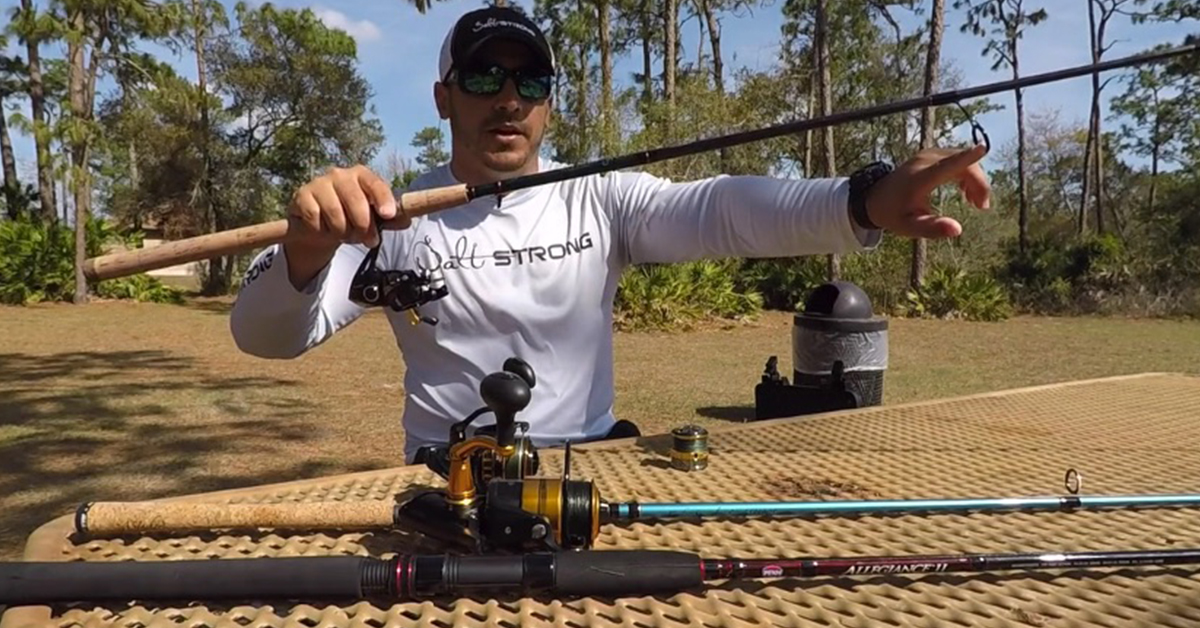
Here are the essential components that you need to catch redfish:
- Rod
- Reel
- Line
- Leader
Of course, you’ll also need a lure or bait and a hook, but we’ll cover that later in this article.
And before we go into detail here, know that when we target redfish we’re mostly using spinning gear, so that is what we’ll focus on here.
We’ll start with the rod.
Redfish Fishing Rods
When talking about a rod and reel combo, the rod is the most important of the two.
Why?
Here’s what rods do for you:
- Allow you to make long, accurate casts
- Allow you to set the hook properly
- Absorbs most of the pressure from the fish
If a rod is too flexible, you won’t be able to make long accurate casts or set the hook properly.
And if a rod is not strong enough, if you have a big fish at the boat and she decides to make one last-chance run, your rod may snap.
So if you’re tight on a budget, definitely go for a higher quality rod over an expensive reel.
Most of the rods we use for inshore fishing (including targeting redfish) are:
- 7-7 1/2′, occasionally a little longer (like this Temple Fork Outfitters rod that is 7′ 9″)
- Medium to medium-heavy power
- Fast action
Check out this video below to see one of the rods we’ve been using:
Temple Fork Outfitters GIS Series Rod Review
If you want more rod reviews like this, head over to our fishing rod reviews page here.
Redfish Fishing Reels
When it comes to fishing for inshore redfish, we typically recommend reels in the 2500-3000 size, and up to a 4000 series reel if you’re targeting bull reds in heavy structure, such as under a bridge or near passes and inlets.
We’ve tested out many different brands, and you can check out our fishing reel review page here.
One of our recent reviews was for this Diawa Fuego LT, which you can see below:
Daiwa Fuego LT Reel Review [VIDEO]
Now, onto the mainline.
Fishing Line For Redfish
We love braided line because it casts far, has a little stretch (which helps with the hook set), has a thin diameter (so you can load a lot of line on a reel), and is very strong.
We typically use 10-15 lb braided line when targeting redfish on the flats.
We do not strongly recommend a single brand, but you can check out one of our brand vs. brand tests below:
Power Pro vs. Spiderwire Casting Distance [VIDEO]
For the whole series of tests between these two brands, including casting distance, abrasion resistance, and knot strength, check out this review of PowerPro vs. Spiderwire Ultracast Invisi-Braid.
Best Fishing Leader When Fishing For Redfish
Redfish are not particularly toothy, nor do they have razor-sharp gill plates, so we typically use 20-25 lb leader when targeting them.
As far as whether to use mono or fluorocarbon leader, check out this abrasion resistance test we did:
Mono vs. Fluoro Abrasion Resistance Test [VIDEO]
To see all of our line and leader tests and reviews, check out our fishing line page.
And of course, just because you’re using the best line and leader doesn’t mean you’ll get the best performance out of it.
You also need to be using the best knots.
This leads us to the next point…
The best knots for redfish
When we’re tying on our mainline to the leader, the FG knot is our favorite because it is both strong and thin.
Check out the video below to learn how to tie the FG knot.
How To Tie The FG Knot [VIDEO]
And when tieing our leader to an artificial lure, we typically use a loop knot such as the non-slip loop knot.
Check out the video below to learn how to tie the non-slip loop knot.
How To Tie The Non-Slip Loop Knot [VIDEO]
Check out this post to see all of the best fishing knots.
And now that you know where to go to find redfish and have the right equipment to catch them, you’ll need the right baits and lures to catch them with.
First, we’ll cover catching redfish with live bait, then we’ll cover catching redfish with artificial lures.
How To Catch Redfish With Live Bait
Redfish aren’t particularly picky eaters.
They’ll take a variety of live bait including:
- Shrimp
- Pinfish
- Finger mullet
- Pilchards
- Blue crabs
Try to match the hatch and use whatever the fish are currently feeding on.
As far as rigging live bait, check out these two videos below on rigging shrimp and pinfish.
How To Rig A Pinfish [VIDEO]
Even though we caught a snook there, if you’re fishing structure with a pinfish, rigging them like that will work for redfish as well.
How To Rig Shrimp On A Jighead [VIDEO]
Throwing shrimp on a jighead around mangroves, docks, jetties, sandy potholes, and on the edges of flats works great for catching redfish.
Bonus Tip: Catching Redfish With Cut Bait
Fresh cut bait works well for redfish who are foraging the bottom for an easy meal.
Again, tossing a chunk of cut bait near structure mentioned above will likely result in a surprised redfish who thought he was in for a free meal.
Check out the video below to see how Tony recently caught some monster reds with cut mullet.
How To Catch Redfish With Cut Bait [VIDEO]
Are those some massive reds or what?!
Note: to download the Free PDF Cheat Sheet, click here.
How To Catch Redfish With Artificial Lures
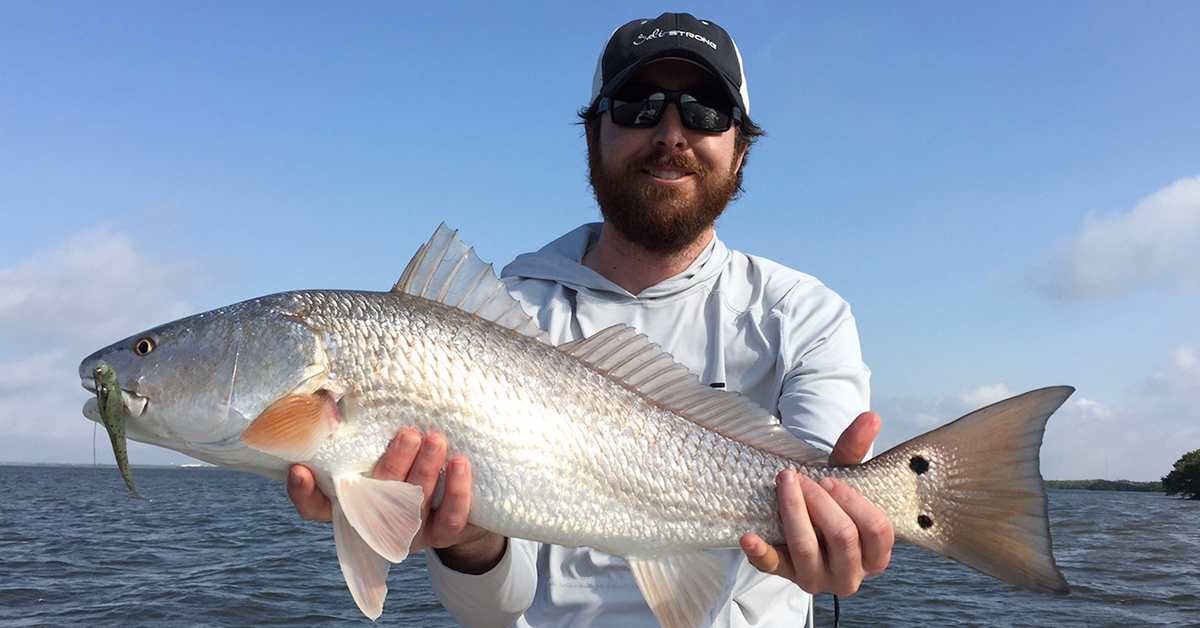
The majority of the time we target redfish, we’re using artificial lures.
Just like if you’re using live bait, you want to match the hatch.
Are the reds eating giant pinfish?
You’ll likely want to use a larger lure, like the 4″ Slam Shady Diezel.
Are they eating small pilchards?
Maybe you’ll go with a 2″ gold spoon.
Are they feeding on small shrimp in the wintertime?
Then maybe you’ll go with a 3″ gulp shrimp on a jighead.
Here are a few of the lures we like to use:
And here are a few tips to keep in mind when using artificial lures:
- Color doesn’t matter as much as size (remember the match the hatch tip above?)
- Get really good at using one or two lures to elicit strikes. It doesn’t how matter what lure you use if you don’t know how to generate strikes with it. For my brother Luke’s story about this, check out our Inshore Manifesto.
For more information about the best lures for catching redfish, watch this video below:
The Best Lures For Catching Redfish [VIDEO]
And remember how in the intro I said that a redfish is a redfish no matter where it is, although there are some subtle differences?
We ran into one of those subtle differences last year when we went to Louisiana.
There was a very stark difference between Florida redfish and Louisiana redfish.
Want to see what it is?
Watch the video below.
Florida Redfish vs. Louisiana Redfish [VIDEO]
Pretty insane hook-ups right?
Conclusion
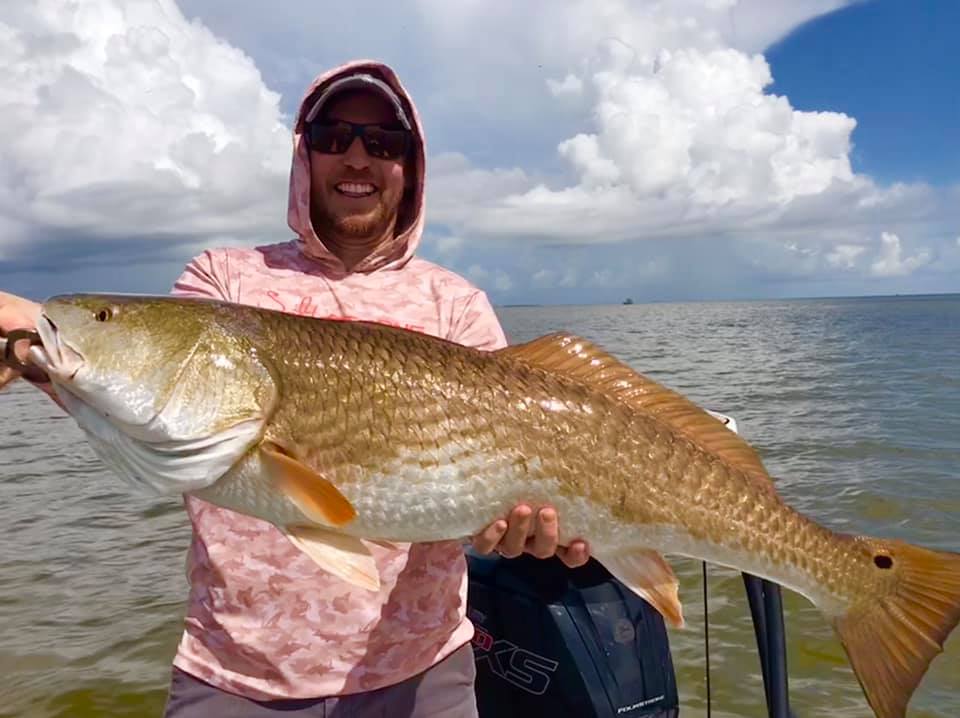
I hope these tips help you get out on the water and catching some reds!
Have any questions about redfish?
Let me know in the comments below!
And if you’re frustrated that you aren’t catching as many redfish as you’d like, take our Redfish Skunk Factor Quiz.
It’ll help you identify why you aren’t catching redfish and how to fix it.
You can take the Redfish Skunk Factor Quiz here.
P.S. Know someone who wants to catch more redfish? TAG or SHARE this with them!
Want To Solve Your #1 Redfish Catching Problem Right Now?
After surveying over 7,000 inshore anglers about their top problems in consistently catching redfish, we found that it all boils down to a half-dozen core mistakes (aka – “Redfish Skunk Factors”).
So we made this custom analysis tool to help you solve your #1 problem: Click here to get started
Related articles:
- How To Catch Redfish Like A Pro [3 Shortcuts To Success]
- How To Catch More Redfish, Snook, & Grouper With Just ONE Lure
- The Best Tides For Redfish, Snook, And Speckled Trout [Flats, Bays, & Creeks]
Disclaimer: When you buy through links on our site, we sometimes earn affiliate commission from places like Amazon, Bass Pro, Tackle Warehouse, etc. It’s one more way we can help you quickly find the best deals on the web while making sure we’re still around to serve you for years to come (and you do want us to be around to help you catch fish for many more years, right)?
Related categories:
STOP WASTING TIME ON THE WATER!
Do what the “SMART ANGLERS” are doing and join the Insider Club.
Here’s what you’ll receive today when you join:
- Weekly fishing reports and TRENDS revealing exactly where you should fish every trip
- Weekly “spot dissection” videos that walk you through all the best spots in your area
- Exclusive fishing tips from the PROS you can’t find anywhere else
- Everything you need to start catching fish more consistently (regardless if you fish out of a boat, kayak, or land).

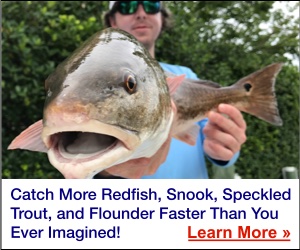








Hi Luke ,Joe ..Why is it I always feel like I’ve come home when I’m viewing your instructional videos.They are well informed.TU . I wish that there was a way that your info transcended NORTH TO NE . I know that basically it’s the same all over .. Also , when reporting on rods/reels it would be beneficial to know how heavy the fish we can target ????. Thanks again
Thanks so much for making time to leave the nice comment Robert! We’ll make sure to keep that in mind for future rod/reel reviews, and we do plan on expanding the content further north in the near future. Tight Lines!